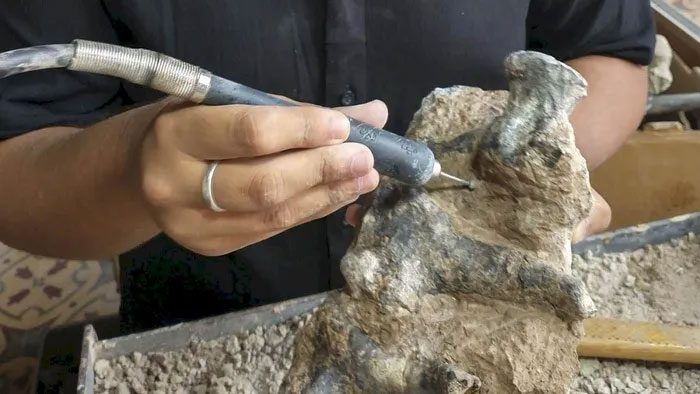An Argentine archaeological team has discovered a well-preserved fossil of the limbs of a 200 kg giant armadillo species that lived approximately 500,000 years ago in San Pedro, located 170 km from the capital city of Buenos Aires.

Well-preserved fossil limbs of a 200 kg giant armadillo that lived approximately 500,000 years ago. (Photo: Telam).
According to experts from the San Pedro Paleontology Museum, the discovered limbs belong to the species giant armadillo scientifically named Neosclerocalyptus ornatus, which had thick armor and could grow up to 2 meters in length. Museum director José Luis Aguilar stated that it is very rare to find a complete limb section of a prehistoric creature after hundreds of thousands of years.
Scientists believe that the area where this armadillo died was a swamp during the late Ensenadense epoch, a time characterized by the presence of mammals in South America (between 0.4 and 1.2 million years ago). The remains were discovered in the suburbs of Buenos Aires, at a depth of 9 meters in a very solid sediment layer, dating back over 500,000 years.

Scientists believe the armadillo died in a swamp. (Photo: Telam)
According to experts, typically, the bones of dead animals decompose or erode over time; however, this armadillo perished in a swampy area, allowing its limbs to be preserved in a state of “suspended stillness.”
This discovery is significant for paleontologists as this fossil will provide extensive information on the anatomy, mobility, and weight of the animal. In addition to the limbs, two lower jaw sections with joints, a complete arm bone, some armor fragments, and several complete vertebrae from the animal’s tail were also found.
Established in 2003, the San Pedro Paleontology Museum, named Fray Manuel de Torres, currently exhibits 20 fossil specimens of mammals and regularly has expert teams conducting archaeological work in the area.
Argentina is often referred to as the graveyard of dinosaurs. Many fossils dating back to the Triassic, Jurassic, and Cretaceous periods have been discovered in this South American country and are not found in the Northern Hemisphere. Notable fossils have been unearthed in Southern Patagonia, as well as in northern provinces such as La Rioja, San Juan, and Salta.


















































